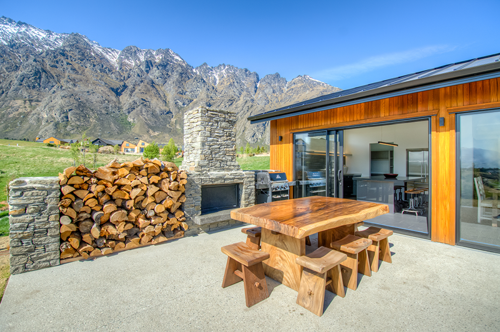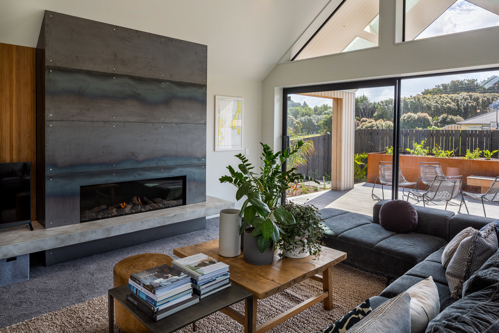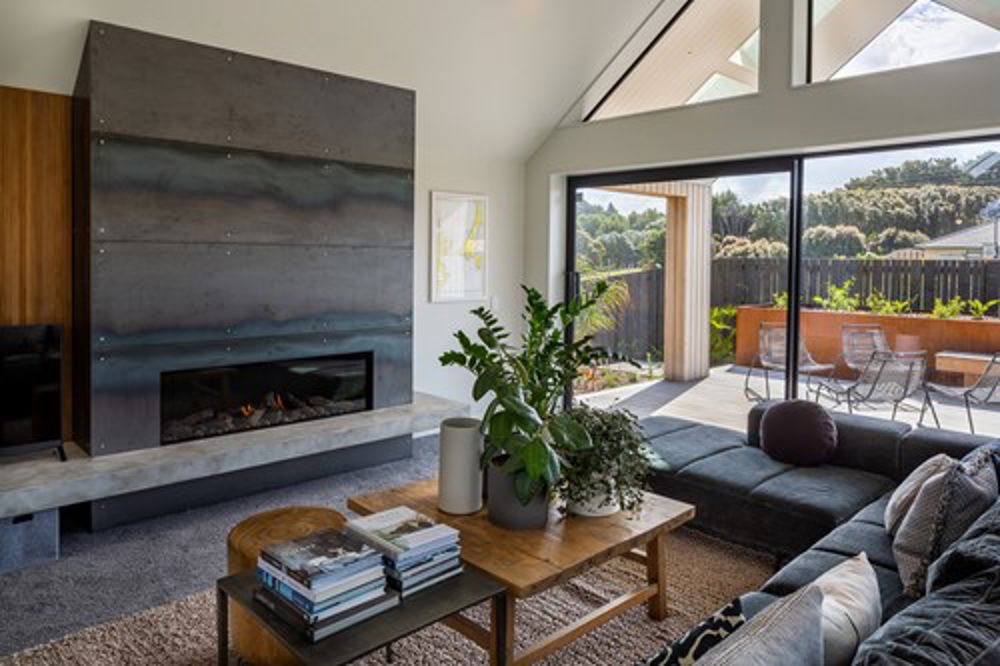-
Considering installing a fire or updating your current fire or heating situation? Jason Hague-Smith from Wellington Fireplace draws on 24 years of experience to weigh up the options and dispense some advice for choosing the right heating solution for your home.
Where do we start?
Basically, there is no blanket solution for all, says Jason. “When people are building, we take a look at the plans and the different zones within the house that require heating and design a custom solution for each unique home.”Usually, this will consist of a main heating source in the living area, often ducted to provide heat to the bedrooms and in larger houses a supplementary heating solution, such as a heat pump or second fire, he says.
With more than 900 products in stock, Wellington Fireplace has something for every situation and budget.
Wood fire or Gas fire?

Again, there is no hard and fast rule – it’s totally subjective.
“Many factors can influence the cost of heating – the size of your home, the amount of time you spend at home, how well insulated it is and how efficient your fireplace is,” Jason says.
Depending on where you buy your wood, and if you can be bothered collecting, transporting, splitting and stacking it yourself, it can be very inexpensive to run a log burner.
But an efficient gas fire can be three times cheaper to run than an inefficient wood burner.

Natural gas fires are cheaper to run than LPG, but natural gas is not an option in the South Island, because as far as he is aware, natural gas is only available in the North Island.
For many years there has been very little demand for gas fires, but in the past two-three years he has started seeing some attractive, exceedingly efficient gas fires come onto the market, he says.
Many people like the idea of a wood fire, but when it comes down to it, have very little time or inclination to chop kindling and build a fire each night.
Busy career people and working families for example are often better suited to the convenience of a push button heating source, so they can set the timer to crank up half an hour before arriving home or rising in the morning.
Who to call?
One of the biggest mistakes people make is not getting a member of the New Zealand House Heating Association to install their fireplaces, says Jason.Among other things, the New Zealand House Heating Association ensures members comply with their Code of Ethics and will work with consumers to get their fires installed correctly in instances of poor workmanship.
What does it cost?
You can expect entry level free standing wood burners to start around $1200 (excluding the flue, flue guard and installation) and range to $3500-$4000, while inbuilt fires can range from $2,500-$8000.Gas fires can range from $3000-$20,000, depending on their efficiency, functionality and design.
Are wetbacks a good idea?
Wetbacks are a great idea for people with wood fires, says Jason, who recommends an automated system that will flick back to electric heating when the water reaches a certain temperature – otherwise you’re likely to have a rude wake up call when you hop in the shower in the morning.As a general rule, he recommends the hot water cylinder be within five metres of the fire so it’s cost-effective and efficient, otherwise the installation costs increase and the benefits lessen.
At David Reid Homes we understand there are a million and one decisions to make when embarking on your home design and build project, which is why we partner with the top industry experts to get you the most update information and ensure your home is right for you.
Get Fired Up

Filed under:
- Design and Advice
- Latest News